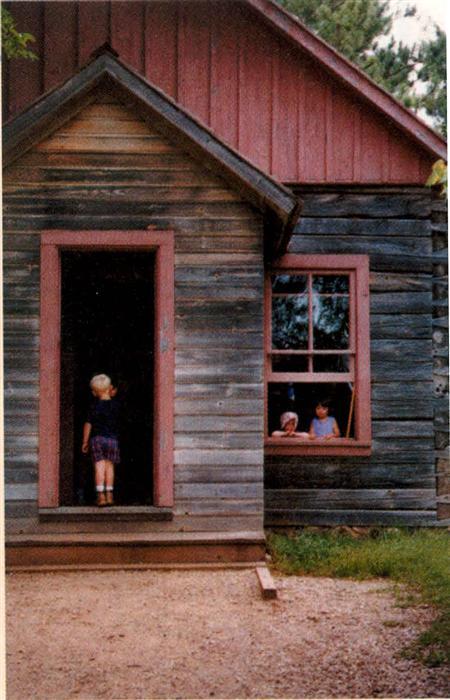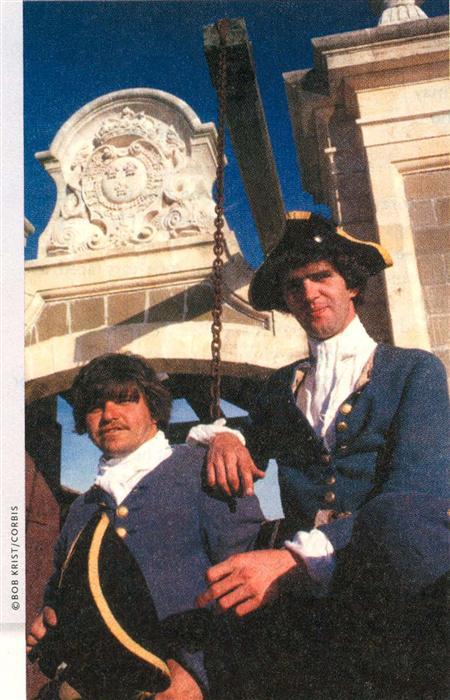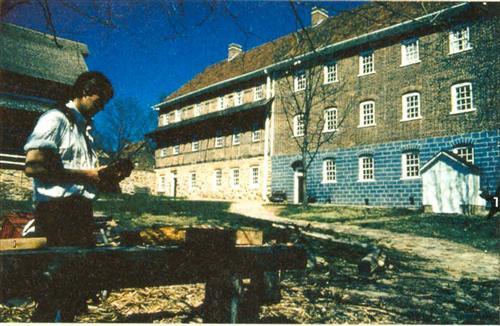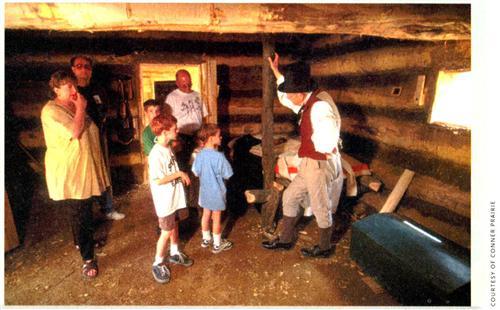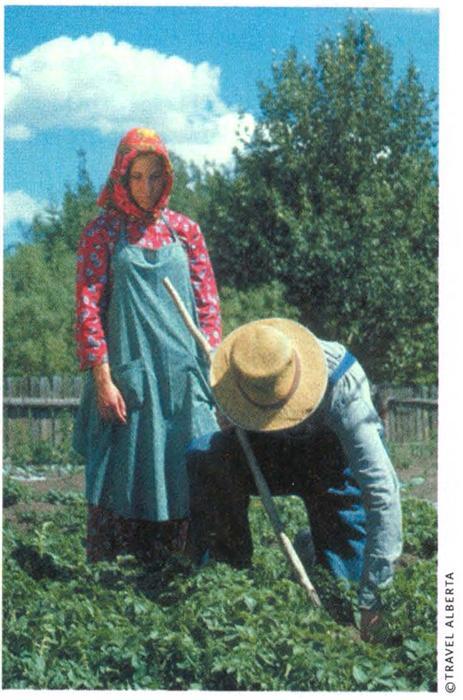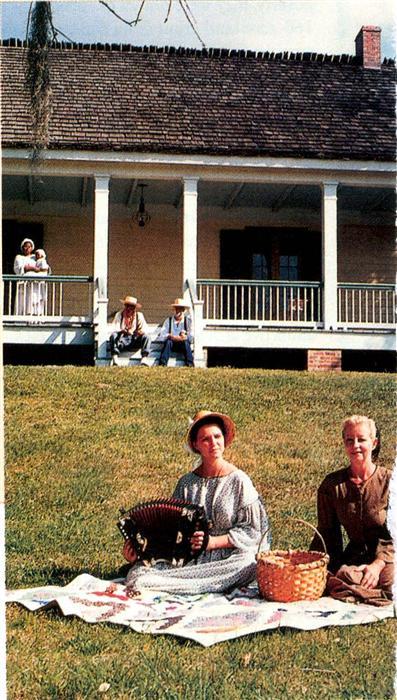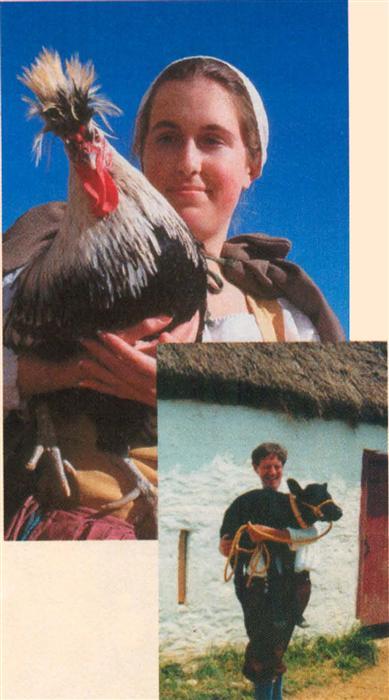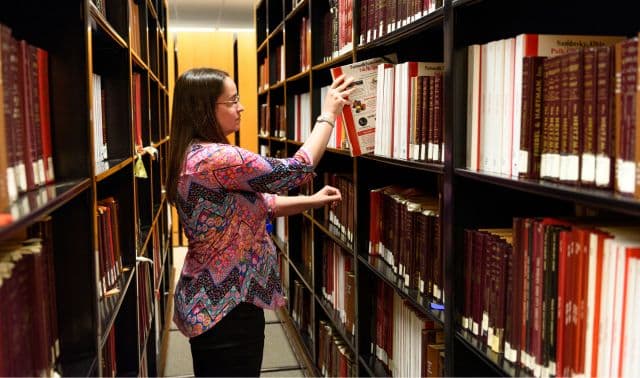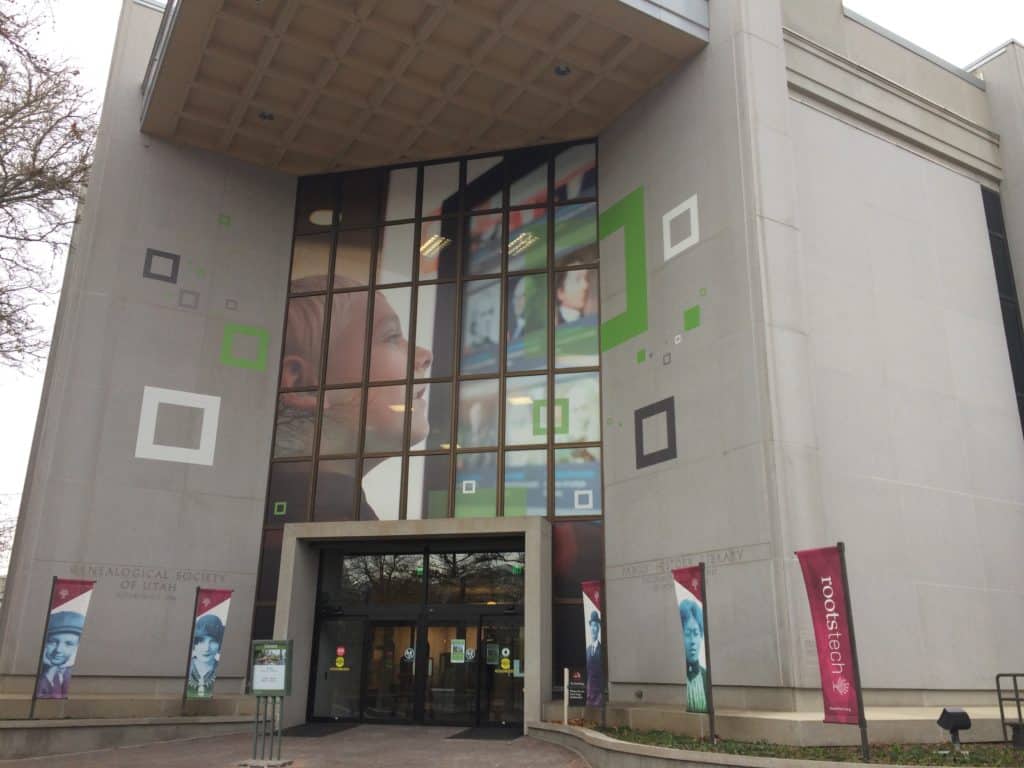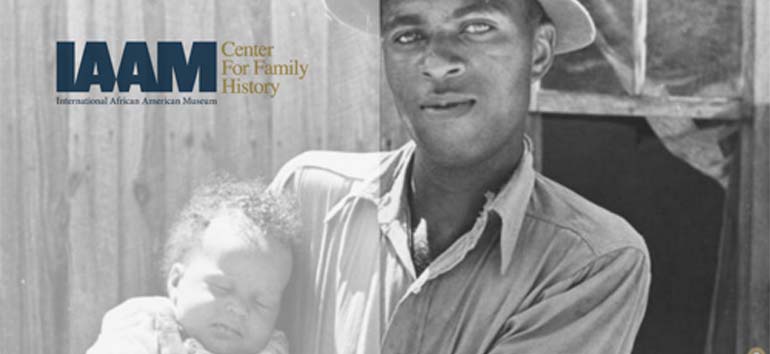Ever wonder about the daily life of your immigrant great-great-grandmother? Maybe your family broke the sod on a prairie farm in Indiana or settled in a Colonial town such as Williamsburg. Perhaps you have African-American roots or Native American heritage and long to connect with that part of your past.
If you’re looking for a way to bring an ethnic branch of your family tree to life, we have just the answer: Step into the shoes of your ancestors at one of these 10 living history villages across North America. Each of these sites re-creates and preserves — to varying degrees and in different ways — the lives, customs and folkways of a particular ethnic group or groups.
Make the most of your visit
- Dress for the weather — and the terrain. It sounds obvious, but it’s amazing how many people forget to do this. Many outdoor museums are spread out, so comfortable walking shoes are essential. Don’t forget an umbrella. If a storm rolls in, you may be a long walk from your car or the visitor center.
- Don’t try to do it all. At some of the larger sites, you can spend a day or more and still miss some programs, buildings or museum exhibits. So it makes sense to learn as much as possible about your destination ahead of time and match your tour to your family’s interests and heritage. If your great-great-grandfather was a blacksmith, for example, plan to stop at the blacksmith shop first.
- Time your visit around a special event, if possible. Special events give you more opportunities to immerse yourself in another era. Museums tend to have extra interpreters available and special hands-on activities scheduled at these times. The downside: Some events can be crowded, depending on location and weather. Certain events — especially holiday tours and classes — require extra fees and early registration. Always call ahead to confirm schedules and holiday hours.
- Take advantage of the off-season. Although it’s nice to visit sites during special events, you might also enjoy taking a tour during slower months. You can watch craftspeople up close and get extra details. You might even have the opportunity to try hands-on activities not offered to summertime visitors. Just remember that villages often shorten hours, close buildings and have smaller staffs during the off-season.
- Participate in hands-on activities. You don’t have to be a kid to try carding wool or join in a musket drill. Doing so will give you greater appreciation for the challenges your ancestors faced.
- Sample foods, if available. Although many sites are prohibited from serving food prepared during cooking demonstrations, several outdoor museums have a bakery or restaurant on site. Tasting regional foods and historical recipes might be the most memorable part of your trip.
- Engage first-person interpreters in conversation. Many outdoor museums employ first-person interpreters who play the roles of citizens from the era represented at the site. Ask questions about their daily lives, chores, the political climate or their clothing.
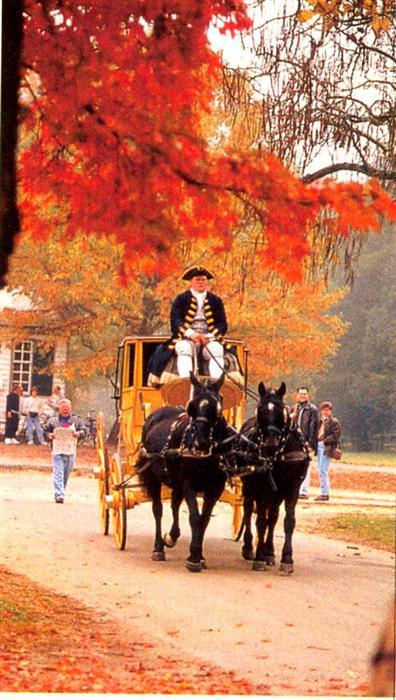
Every American should visit Colonial Williamsburg at least once. After all, the Revolutionary War events at Williamsburg ultimately shaped the lives of all US citizens. Here, in 1776, the House of Burgesses adopted Virginia’s Resolution for Independence and urged the other Colonies to declare their independence, which they did two months later at the Continental Congress. Then, George Mason designed the Virginia Declaration of Rights, which became the model for the federal Bill of Rights. And in 1779, Thomas Jefferson introduced the Statute for Religious Freedom, laying the groundwork for the First Amendment.
What to see and do:
The restored town of “CW” — as the locals call it — has special significance for descendants of African-American slaves, who made up more than half the town’s population during the 1700s. The Other Half Tour, offered twice daily, provides an excellent overview of the lives and livelihoods of 18th-century African-Americans. In January, Williamsburg closed its Carter’s Grove plantation, home to a reconstructed slave quarter, for about two years. But a new site opening this spring will interpret the lives of rural Virginians. Several evening programs, performances and other events use story, song and dance to convey slaves’ experiences.
Williamsburg lets visitors immerse themselves in 18th-century life. See a silversmith shaping a flat piece of silver into an elegant bowl, a gunsmith carefully drilling the long, narrow barrel of a musket, or a wig maker powdering a gentleman’s wig. You can also dine Colonial-style at four historic taverns or purchase baked goods at Raleigh Tavern Bakery. If your checkbook allows, get the whole experience by spending the night in a restored or reconstructed Colonial house.
Fun for families:
Check the Visitor’s Companion newspaper for details about hands-on programs offered during the summer. Children enjoy “enlisting” at the military encampment, helping brickmakers knead clay and exploring the garden maze behind the Governor’s Palace. Sharp-eyed young visitors will recognize some buildings from the American Girl series of Felicity books, which are set here.
Special events:
CW offers a dizzying array of special events, classes, ever-changing museum exhibits and symposia. Thousands crowd the streets for Grand Illumination, Williamsburg’s annual prelude to the Christmas season. And the Williamsburg Institute offers a number of special classes and behind-the-scenes tours.
Details:
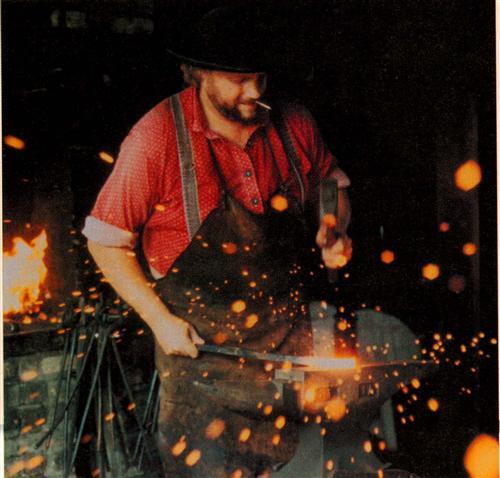
Wisconsin was a mecca for newly arrived immigrants in the late 19th century. By 1880, the majority of the Badger State’s farmers had come from Europe, and Wisconsin was home to more foreign-born farmers than any other state. Sprawling and hilly, Old World Wisconsin interprets the ethnic and cultural traditions of the state’s immigrants during the 19th and early 20th centuries. On a typical summer day, visitors can take part in a lively temperance rally or witness a re-enactment of a town-hall debate.
What to see and do:
The crossroads village portrays a mid-1870s settlement. An Irish laundress, Norwegian wagon maker and German blacksmith are among the residents of this ethnically diverse rural community. Beyond the village lie an African-American pioneer settlement and agricultural areas representing farm communities of German, Polish, Danish, Norwegian and Finnish immigrants. Visitors can travel between the areas by open-air tram.
The farms provide vivid illustrations of Old World architectural styles brought to Wisconsin by immigrants. In the German Area, the Koepsell House is a good example of fachwerk (half-timbered) architecture, and the Schottler farmhouse exemplifies the blockbau (log) building tradition. Animals and family shared (in separate rooms) the Kruza House in the Polish area. The 1897 octagonal Clausing Barn houses a cafeteria-style restaurant, which offers an ethnic special daily and a fish fry on Friday evenings.
Fun for families:
Caldwell Farmers’ Club Hall hosts hands-on activities and old-fashioned games for children and adults. July 24, young visitors can experience pioneer life during Laura Ingalls Wilder Children’s Day.
Special events:
Celebrate ethnic holiday traditions with A Pioneer Christmas, Dec. 6-7 and 13-14, and after-hours Christmas lamplight tours, Dec. 5-6 and 12-13. Another popular annual event is the 1876 Independence Day celebration.
Details:
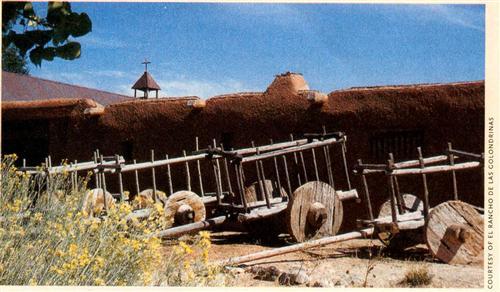
In 1780, Juan Bautista de Anza, former governor of New Mexico, stopped at El Rancho de las Golondrinas with a 151-man expedition searching for a direct route to Sonora, Mexico. Located along El Camino Real (The Royal Road), The Ranch of the Swallows was a frequent stopping place for travelers, as historical diaries and reports attest.
What to see and do:
Forty structures, including some original buildings, re-create all aspects of Spanish colonial and New Mexican territorial life. Smell the delicious aroma of homemade bread fresh from courtyard ovens, listen to the click-clack of looms, which once dominated New Mexican villages, or watch the giant waterwheel turn at The Big Mill. And don’t miss the religious structures or the defensive tower that once protected the 18th-century placita house.
Fun for families:
At the children’s festival in July, visitors can play historical games and make miniature adobe houses and other crafts. Throughout the summer, children ages 7 through 12 (and accompanying adults) can participate in Josefina at Las Golondrinas tours, based on the American Girl Josefina books, which are set at the ranch.
Special events:
The major annual event is Harvest Festival, held the first weekend in October. Grain threshing and milling, grape crushing, craft demonstrations, music and dance re-create harvest time. Spring Festival, the first weekend in June, and Summer Festival, the first weekend in August, round out the schedule.
Details:
Located at 334 Los Pinos Road, Las Golondrinas is open Wednesday through Sunday, June through September, and for Special events. Admission is $5 for adults, $4 for seniors and teenagers, and $2 for children ages 5 to 12. Call (505) 471-2261 or visit <www.golondrinas.org>.
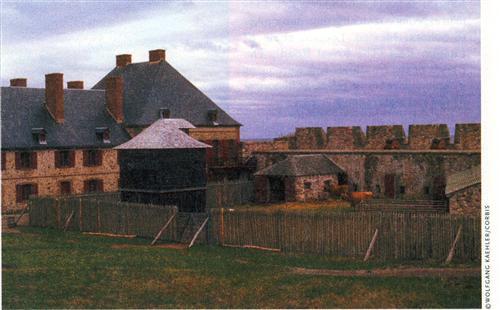
Before entering Fortress of Louisbourg through the limestone and masonry Dauphin Gate, visitors must pass muster with the “soldier” on duty. As you approach, he cries out, “Halte! Qui va la?” (Halt! Who goes there?) If no one answers, he’s likely to respond: “Vous parlez francais? … No? So you must speak English. If you speak English, you better have a good reason to be here as we are at war with England.” After gaining assurance that modern-day visitors are not spies, the soldier admits you.
Inside the fortress walls, it’s 1744 every day. Then, Louisbourg was a thriving seaport and capital of the French colony Îie Royale (present-day Cape Breton Island). Today, visitors see a reconstruction approximately one-fifth the size of the original fortress. Considered a gem of Canada’s park system, the fortress was created, beginning in 1961, to preserve a historically significant site and to provide work for unemployed coal miners.
What to see and do:
More than 60 reconstructed buildings make up this town and show how the governor, fishermen, soldiers and merchants lived in the New World. The King’s Bastion is the largest building on site and the heart of the fortress then and now. From atop the ramparts, visitors can take in a sweeping view of the town and the harbor. Three restaurants offer period food — no meat on Fridays and Saturdays, in observance of the church calendar. And visitors can sample “soldiers bread” at the King’s Bakery.
Fun for families:
In July and August, children can participate in period music and dance performances led by youth interpreters. Many young visitors are thrilled to pet Heloise and Guillaume, two French Canadian workhorses.
Special events:
Musket, cannon and drumming demonstrations highlight the Feast of St. Louis celebration, Aug. 24, in honor of King Louis DC of France. The town celebrates the Feast of the Assumption Aug. 15.
Details:
Fortress of Louisbourg is located on Nova Scotia’s Cape Breton Island, near the modern town of Louisbourg. Follow Route 22 from Sydney. The site is open daily June 1 through Sept. 30. Admission (in Canadian dollars) is $12 for adults, $9 for seniors and $6 for ages 6 to 16. Limited programs and services are available in May and October at reduced admission prices. Call (902) 733-2280 or visit <fortressoflouisbourg.ca> and <fortress.uccb.ns.ca>.
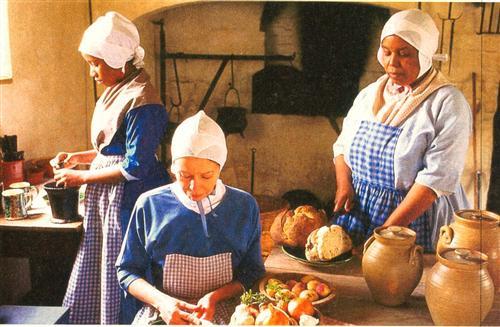
The crunchy Moravian cookies made in Old Salem’s Winkler Bakery are famous nationwide. But few Americans know the history of the Moravians, a Protestant German sect that founded Salem in 1766. In fact, enough people confuse Old Salem with Salem, Mass., that Old Salem’s Web site explains why there are no witches here. Salem, NC, was a planned, self-sufficient church community populated by Moravians relocating from Pennsylvania. The Moravian religious movement had its roots in what’s now part of the Czech Republic. Today, Old Salem shares the stories of Moravians, who addressed one another as “brother” and “sister,” and African-Americans — Moravian and not — who made Salem their home. The Old Salem historic district contains about 100 restored and reconstructed buildings, with about a dozen buildings open for tours.
What to see and do:
Look for Single Brothers’ House, a dormitory providing perspective about the Moravians’ beliefs, trades and way of life. An “African Americans in Salem” walking-tour brochure details the lives of free and enslaved blacks in the community and their connections to the town’s historic buildings. For a taste of Old World cooking, dine at Old Salem Tavern; menus vary, but traditional Moravian fare may include the Bratwurst Platter or Beef Ragout.
Fun for families:
Children ages 4 through 9 can try on costumes, step into a miniature Moravian house, weave cloth and scale a two-story climbing structure at The Old Salem Children’s Museum. The Old Salem Toy Museum displays more than 1,200 antique toys dating from 225 to 1925.
Special events:
Every July 4, Old Salem re-creates Independence Day celebrations from the late 1700s and early 1800s. Several events also coincide with the holiday season, including Salem Christmas, Dec. 20, and evening candlelight tours. Old Salem offers craft workshops and lectures throughout the year.
Details:
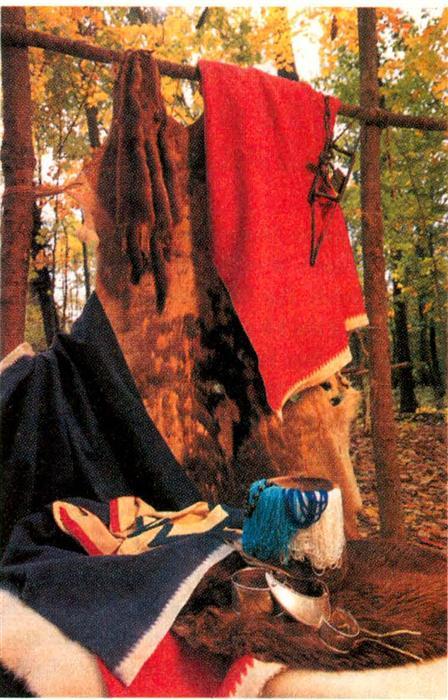
Conner Prairie grew up around the Federal-style William Conner House, one of the first brick homes in Indiana. The site’s Prairie-town village re-creates a standard 1836 Indiana town, complete with a weaver’s cottage, carpentry shop, inn and historic homes. Conner Prairie stands out for its interpretation of 19th-century pioneer life, especially through innovative special events.
What to see and do:
Of particular interest to those of Native American ancestry is the reconstructed Lenape (Delaware) Indian Camp and McKinnen’s Trading Post on a river bluff near Prairietown. The site includes five wigwams, a garden and a double-pen log-cabin trading post, capturing frontier life circa 1816. At Liberty Corner, the Zimmerman Farm showcases rural life in 1886.
Fun for families:
The PastPort Discovery Area offers hands-on activities, including opportunities to dip candles, wash clothes on a washboard or try period tools.
Special events:
Visitors to the village on four special weekends can participate in a re-creation of the 1824 Fall Creek Massacre Trials by playing jurors. The case involves a white man accused of playing a role in the deaths of nine Seneca Indians. Another thought-provoking program, Follow the North Star, lets participants play the roles of slaves on the Underground Railroad. The physically demanding outdoor program uses a series of dramatic encounters with Indiana’s “citizens” to illustrate treatment and perceptions of slaves in the mid-19th century.
Numerous classes and special events include the White River Folk Festival, June 6-8, and County Fair, Sept. 19-21. Hearthside Suppers participants help prepare their evening meal at the Conner House. And during a new immersion program called Weekend on the Farm, adventuresome time travelers perform farm chores as overnight guests at an 1886 Victorian farmhouse.
Details:
During the early 20th century, tens of thousands of Ukrainian emigrants made their homes in east central Alberta. Driven from their homeland by overpopulation and poverty, they were drawn to Alberta by a 160-acre land grant from the Canadian government. The Ukrainian Cultural Heritage Village depicts the settlement from 1891, when the first immigrants arrived, to 1930, when Ukrainians became assimilated into Canadian culture.
What to see and do:
More than 30 historic structures have been relocated and grouped into the Townsite, the Rural Community and the Farmsteads. Free horse-drawn wagons transport visitors between these areas. You’ll enjoy the distinctive architecture of the village’s buildings, from the thatched roof of the Makowichuk Barn to the onion domes of the three Byzantine-rite churches.
On a typical day, you might see female interpreters, their heads covered by khustky (kerchiefs), tending gardens, baking bread or folding laundry. The men might be plowing the fields, transmitting grain prices by telegraph at the railway station or weighing goods at the hardware store. Don’t miss the reconstructed burdei, a temporary home for newcomers dug out of the side of a hill. For a flavor of Ukraine, stop by the food kiosk for pyrohy, holubtsi (cabbage rolls) or kovbasa (sausage).
Fun for families:
Visit the one-room Russia School and notice the unadorned walls, wooden desks with holes for inkwells, and the abacus. Children also enjoy Demchuk Blacksmith Shop, the jail cell at Andrew Alberta Provincial Police Post and Luzan Grocery.
Special events:
The biggest event is Ukrainian Day, Aug. 10, which features folk dancers, displays of pysanka (egg) decorating, craft demonstrations and A Taste of Ukraine food fair. Other events include Celebration of Spring, May 19, and the Heritage Food Festival, Sept. 14. Throughout the year, the villageincorporates observances of religious holy days into its programming.
Details:
Twenty-five minutes east of Edmonton along Highway 16, the village is open daily, late May to Labor Day, and weekends after Labor Day until the second Monday in October. The rest of the year, the village is open Monday through Friday, except on major holidays. Summer admission rates (in Canadian dollars) are $8 for adults, $7 for seniors, $4 for children ages 7 to 17 and $20 for families. Call (780) 662-3640 or visit <collections.ic.gc.ca/ukrainian> or <www.cd.gov.ab.ca/enjoying_alberta/museums_historic_sites/site_jistings/ukrainian_heritage_village>.
In 1755, French-speaking Acadians were driven from their homes in Nova Scotia after refusing to swear allegiance to the British monarchy. Seeking refuge in Louisiana, the Acadians — later known as Cajuns — joined Native Americans and Creoles and founded several small towns, including Vermilionville, present-day Lafayette. Today, the living history village of Vermilionville preserves Cajun and Creole heritage by re-creating an early Louisiana town.
What to see and do:
Craftspeople demonstrate spinning, wood-carving, cooking and other skills. At Le Magasin (The Barn), learn about boat building, decoy carving and other skills Acadian settlers learned to survive along the bayous. Look for La Maison Buller (The Buller House), built about 1803, whose beautiful hipped roof is typical of Creole construction.
The Cooking School holds demonstrations three times daily, complete with samples. If you’re still hungry, stop at Vermilionville’s restaurant, La Cuisine De Maman (Mama’s Kitchen), for Cajun and Creole cuisine. For dessert, shop for cane-syrup “pig ears,” pralines and other goodies at La Boulangerie (The Bakery).
Fun for families:
Children enjoy rides on the hand-drawn ferry across the Petit Bayou and visits to La Forge (The Blacksmith Shop).
Special events:
Hands-on activities for children, craft demonstrations and music performances highlight the Vermilion River Festival, Oct. 5. Every Sunday, Cajun or Zydeco bands play in the Performance Center, a building patterned after an old cotton gin.
Details:
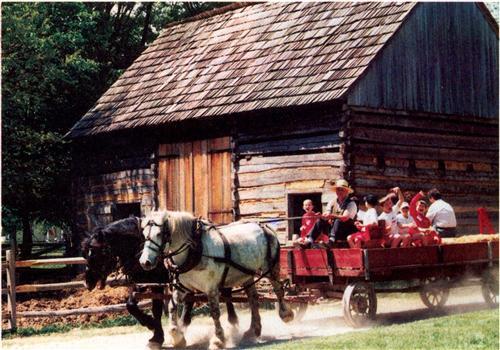
Operated by the state of Pennsylvania, Landis Valley Museum preserves and interprets Pennsylvania German life from 1740 until 1940. Unlike Old World Wisconsin, Landis Valley Museum focuses on a single ethnic group; in doing so, it’s able to cover a much broader time period than museums such as Fortress of Louisbourg and Colonial Williamsburg.
Landis Valley began with a collection of more than 75,000 Pennsylvania German objects collected by brothers George and Henry Landis. Their ancestors were Pennsylvania Germans, also known as Pennsylvania Dutch, a misnomer that’s likely a corruption of the word Deutsch (German).
What to see and do:
For a glimpse of what life was like for the region’s earliest German settlers, tour the Log Farm, a reconstructed 18th-century farmstead. A massive fireplace dominates the log home’s kitchen, where interpreters demonstrate open-hearth cooking. Period furnishings and remnants of an earlier time — sewing equipment, fraktur drawings, cylinder phonograph records — bring the museum’s buildings to life.
Fun for families:
Children like to visit the businesses, including the Print Shop, Leatherworking Shop and Pottery Shop.
Special events:
In December, visitors can immerse themselves in Pennsylvania Dutch holiday customs when Der Belsnickel, a mischievous hobgoblin, makes his appearance at the popular Days of the Belsnickel luncheon tours and candlelight dinners. Other major events include Harvest Days, Oct. 9-12, and a large herb and garden sale, May 9-10.
Details:
Located two and a half miles northeast of Lancaster at 2451 Kissel Hill Road, Landis Valley is open daily year-round and closed on major holidays. Admission is $9 for adults, $7 for seniors and $6 for ages 6 to 17. Call (717) 569-0401 or visit <www.landisvalleymuseum.org>.
The Frontier Culture Museum offers a unique perspective on the early immigrants who settled in Virginia, Maryland and other eastern states after 1730. Rather than simply re-creating their rugged back-country lifestyle, the museum imported historic buildings from Europe to interpret the lives of people living in England, Germany and Northern Ireland before they came to America. In addition, the American Farm — whose buildings include a tobacco barn, root cellar and smokehouse — resembles a mid-19th-century farm in the Shenandoah Valley of Virginia.
What to see and do:
Because it strives to explore the lives of Europeans before emigration, the Frontier Culture Museum lets visitors examine a cross-section of architectural styles, from the thatched roofs of the buildings at the Ulster (Scots-Irish) Farm to the timber-framed farmhouses at the German and English sites. The museum also meticulously re-creates Old World gardens and farming practices: An orchard at the English site contains rare varieties of apple and pear trees, while “lazy beds,” or raised beds, for potatoes dominate an area at the Ulster Farm. Don’t miss the English site’s Worcestershire house, the museum’s oldest structure.
Fun for families:
Of special interest is the blacksmith’s forge at the Ulster Farm. Children also marvel at the historical animal breeds, from the funny-looking White Crested Polish chickens at the German site to the long-fleeced Cotswold sheep at the English site.
Special events:
An Easter celebration blends European customs with 19th-century American traditions. Old World Christmas customs take center stage in December, and visitors can learn about European traditions brought to America by immigrants.
Details:

